A fenced perimeter is a must on any prepper retreat, survival homestead, or suburban bug-in location. Being able to control entry onto your property will help ensure the safety of your loved ones from criminals and the security guards or patrol team tasked with monitoring the area.
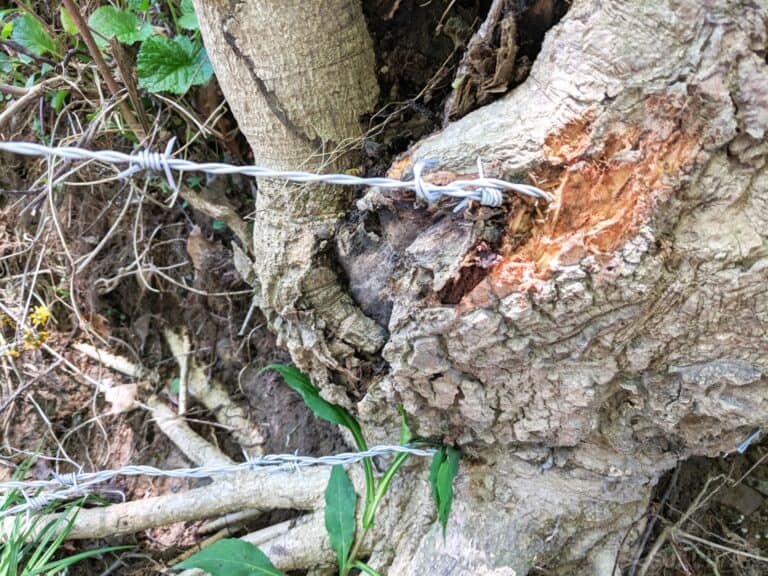
Preppers have three very important things to consider when establishing fencing as part of a perimeter defense plan:
- Everyday Use – Unless the property is to be used solely as a bugout location, the fencing created will have to allow for typical entry and survival homesteading activities – gardening, livestock pasture and the rotation of pastures, hunting, and fishing. You need a sturdy fence that can one day double as part of a dependable perimeter defense barrier but yet not scream, “a prepper lives here.”
- State And Federal Laws – Regulations regarding boundary fencing responsibilities and liabilities, as well as the type of fencing and posts that can be used vary widely by region and state. You might find it shocking to believe that in some states you can be charged with trespassing on your own property!
- Cost – How securely you can legally fence your perimeter and other portions of your survival retreat or other facilities will depend on how much money you have at your disposal. Perhaps you will have to work on the project one section at a time, or on a lesser scale that becomes more fortified over time, Making use of natural elements at your bugin or bugout location, and creating your own fence posts will help keep costs down tremendously.
Like most folks, you likely spent a lot of time thinking about #1 and #3 on the list, but really did not ponder long about #2. Farmers and homesteaders have been rolling up their sleeves and digging post holes and stringing wire for generations without getting arrested for building illegal fences, right?
Well, yes and no. The omnipotent power of big government did not forget about the need to build and maintain fences when spending time passing laws that encroach upon our lives during the past three or four decades.
Table of Contents
Perimeter Fence Types
A fenced perimeter is a must on any prepper retreat, survival homestead, or suburban bug-in location.
Being able to control entry points onto your property will help ensure the safety of your loved ones, and the security patrol team tasked with monitoring the area.
Fences come in all shapes, sizes, and materials. And can be customized to fit the security needs of any budget or home security plan. The following is a list of the most common types of residential fences:
Wooden Fences
A classic choice for homeowners, wooden fences are available in a variety of styles and can be stained or painted to match any aesthetic or home.
Tall wooden fences offer good privacy and are relatively easy to install while shorter ones can be economical barriers for livestock or demarcating property bounds.
Vinyl Fences: Vinyl fencing is a popular choice for homeowners looking for an alternative to wood. Vinyl fences are available in a variety of colors and styles, and are low maintenance compared to other fence types but don’t stay looking good without care.
The nature of vinyl also limits the construction styles to slat and a few other types. Damaged vinyl planks and other parts can be difficult to repair and are likely to require replacement.
Chain Link Fences
Chain link fences are a popular choice for security fencing, as they are sturdy and difficult to breach.
Tall chain link fencing must be climbed, noisily, or breached, which is slow. Chain link fences can be installed in a variety of heights and styles, and are relatively affordable compared to other metal fence types.
Chain link fencing topped by barbed or razor wire (see below) is a universal message that says “stay out.”
Stone Walls: Stone walls are a popular choice for homeowners looking for a high-end look on their property.
While stone walls offer good security and privacy, not to mention considerable protection against gunfire, they are also one of the most expensive and slow-to-build fence options available.
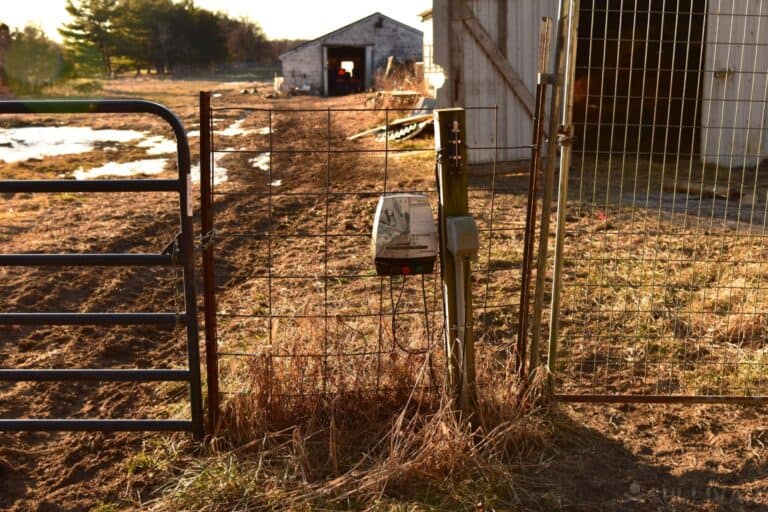
Electric fencing
Electric fencing is a popular choice for security fencing, as it provides a high level of security and deterrence to potential intruders with a minimal footprint and no necessity of being very tall.
Electric fences are available in a variety of voltages and styles, and can be customized to fit the security needs of any property owner. Take great caution when installing and depending upon electric fencing as its use is highly regulated, especially near residential areas.
Security Upgrades for Fencing
No matter what type of fence or wall you choose, adding a few additional security upgrades will add yet another layer of security to your existing security measures. All of the listed upgrades are assets that will help to ensure the safety of your property.
By taking the time to secure the perimeter of your property, you can rest assured that your home and loved ones will have maximum protection.
These include:
Barbed wire
Barbed wire is an excellent topping for any fence and can be added relatively easily.
Barbed wire is difficult to climb, challenging to cut through, and a painful experience for anyone attempting to cross it.
The more strands or bundles you add the better it is as an obstacle, but the greater the expense.
Razor Wire
Razor wire is similar to barbed wire but features thin, evil-looking blades that are designed to cause even more damage and readily tangle would-be burglars.
Razor wire is easy to cut through assuming one is brave enough to approach it, and poses a severe danger to those who might accidentally come in contact with it, including the installer!
Security Cameras
Security cameras are an excellent way to keep an eye on your property at all times and to deter trespassers and thieves.
The presence of security cameras will make most criminals think twice before attempting to break into your home or property and can be installed relatively easily and affordably.
By monitoring your property with security cameras, you can be quickly alerted to any potential intruders and take appropriate action. Modern systems can transmit to a base monitoring system or handily alert you via smartphone or other device notifications.
Alarm systems: Alarm systems are a great way to deter potential burglars and alert you to any activity on your property.
By installing an alarm system, you can be confident that your property is as safe as possible. Alarm systems come in a variety of types, from simple jitter or tilt switches to complex vibration and infrared sensors with AI assessment of false positives.
Alarms can trigger silently or deliver auditory notice via any number of means, even pre-recorded or live messages depending on your preference.
Motion-activated lights: Installing these lights around your property is an easy way to deter trespassers and thieves. The bright light will startle them, help with early warning and increase the possibility of being seen by neighbors or security cameras will deter most would-be criminals.
By following these simple tips, you can easily secure the perimeter of your property and protect your family from harm by making your property even more unappealing to intruders. In the event that they do trespass anyway, you’ll be better prepared to confront and if necessary engage them thanks to multiple layers of protection.
Access Control Systems
Another great way to further bolster the perimeter of your property is by installing an access control system in conjunction with your fencing or other barriers.
Access control systems allow you to restrict access to your property interior by unauthorized individuals while easing the passage of family members and visitors.
These systems can be used in conjunction with security cameras and alarm systems to create a complete and holistic security solution for your property.
There are many different types of access control systems and upgrades on the market that can be mixed and matched seemingly at will, so it is important to do your research to find the right system for your needs.
Security gates: Security gates are a great way to add an extra layer of security to your property. Gates can be installed at the entrance of your driveway or at the entry points of your property.
Gates can be controlled manually or automatically and can be equipped with features such as keypads, card readers, or fingerprint scanners (detailed below) that remove the need for your interaction or authorization at the time of approach.
Keypad entry systems: A keypad entry system is a great way to restrict access to your property. These systems are typically used in conjunction with security gates and allow you to control access by granting or denying entry using a numeric code.
Highly convenient, these codes are vulnerable to theft and deduction if not updated regularly.
Card reader systems: A card reader system is similar to a keypad entry system, but uses plastic cards instead of numbers pads. This type of system is ideal for businesses or properties that have multiple employees who need access to the property.
Fingerprint scanner systems: Fingerprint scanner systems are among the most secure type of access control systems available.
These systems use fingerprint recognition technology to identify authorized individuals. This type of system is perfect for high-security applications such as government facilities or banks.
Biometric scanner: A biometric scanner is a type of body-feature scanner that uses facial recognition technology to identify individuals.
This type of system is perfect for ensuring that only authorized persons can access a property. Increasingly sophisticated, these systems are very difficult to fool.
By installing an access control system, you can rest assured that your fenced property can only be accessed by a dedicated breach attempt or by people that you grant permission to!
Preventing Vandalism of Fencing and Other Security Features
Unfortunately, no security system is perfect, and it is always possible for a determined criminal to find a way past your barriers. In the event that your fencing or other security features are vandalized, it is important to have a plan in place to deal with the situation.
One option is to install additional, discreet security cameras or trail cams that can be used to catch and identify the individual responsible for vandalizing your expensive installations. Once identified, this person can be dealt with using the full force of the law.
Another option is to install security features in such a way that they are too hard to reach or difficult to damage. This will prevent criminals and thieves from damaging your property without fear of repercussion.
No matter what measures you take, it is important to remember that prevention is always better than cure! Protection is an ongoing and complicated process, and anything you leave vulnerable to the idle hands of miscreants could turn into a regular and costly repair.
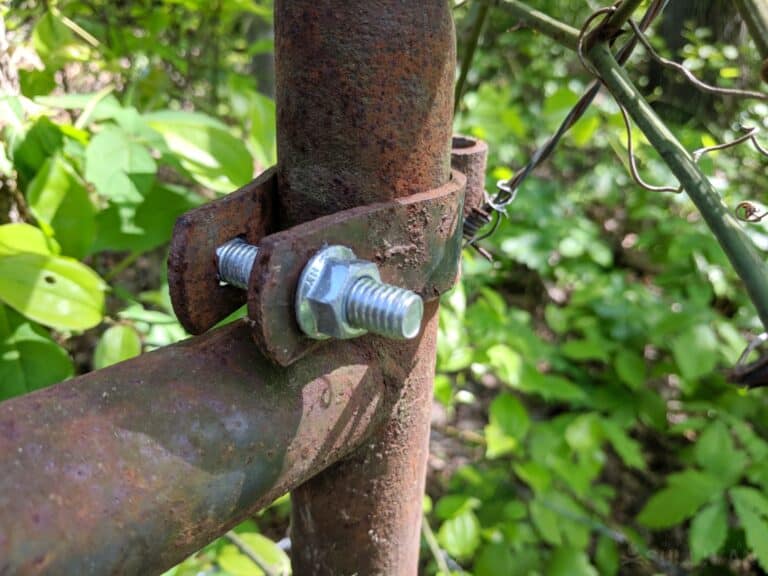
Know the Law Before You Buy, Build, or Repair Fencing
Constructing a perimeter fence that is not in compliance with state laws can cause steep fines to be levied against you as well as the loss of money and time spent building the illegal fence.
Although there are absolutely no zoning laws or permits required to build or repair anything in my rural county except regarding septic tanks, we still fall under the state’s perimeter fencing mandates.
I am willing to bet that 99.9% of the perimeter fences in our county (and others) not only are out of compliance, but property owners do not even know the laws exist.
In my Appalachian state perimeter fences, unless otherwise agreed to by bordering property owners, must be comprised of either high tensile or standard woven wire that includes at least one or two strands of barbed wire and it situated no less than 48 inches from the ground – or high tensile non-electric fence that includes 7 strands of barbed wire which complies with the United States Natural Resources Conservation Service standards.
If the owners of the bordering properties agree in writing, a partition fence can be a combination of barbed wire, electric fencing, or living fencing.
Preppers who live out West are subject to open-range laws. In such states, livestock can wander off the property of their owner unless a property owner takes it upon him or herself to construct a partition fence that meets state standards.
As already noted, laws vary by state, but the requirements outlined below give a broad overview of some common regulations.
Legal Fencing Options in Some Open-Range States
- Fences constructed of “sound” wooden posts, concrete, or steel AND three strings of barbed wire that are no less than ten inches apart, and no more than 15 inches across the top.
- Wood posts must be a minimum of four inches in diameter.
- Posts must be firmly set in the ground at a depth of at least 20 inches deep.
- Fence posts must be set no further apart than 22 feet from the next post of 33 feet apart with a minimum of 2 wood or iron stays between the wood posts. Stays must be placed an equal distance apart from both each other and the wood posts they are situated between.
- A fence made out of wood boards must include wood posts that are no larger than four inches in diameter and set no further than 10 feet apart. There must be three boards placed on each fence section and the boards must be 1 inch thick and 8 inches wide, and placed no more than 10 inches apart – or four boards that are 1 inch thick and six inches were placed no more than 8 inches apart.
- Partition fences could also be constructed of rails, stones, poles, or living material like trees and hedge plants if the barrier is “declared” to be strong, effective against livestock breeches, and protective.
- In addition to being forced to adhere to state boundary fence laws, regulations regarding pastures, fields, and hay coral also exist.
You can check here the fencing laws for your state:
- Fence Laws in Missouri
- Fence Laws in Ohio
- Fence Laws in California
- Fence Laws in Virginia
- Fence Laws in Florida
Barbed Wire Fences
Creating a perimeter fence using only barbed wire may not be legal in your state. If such a fence is allowed, state laws might mandate its height. Common barbed wire allowable fencing heights are typically, 36, 48, or 52 inches tall.
Barbed wire must be properly and firmly secured, stretched, and maintained to remain in compliance with state laws.
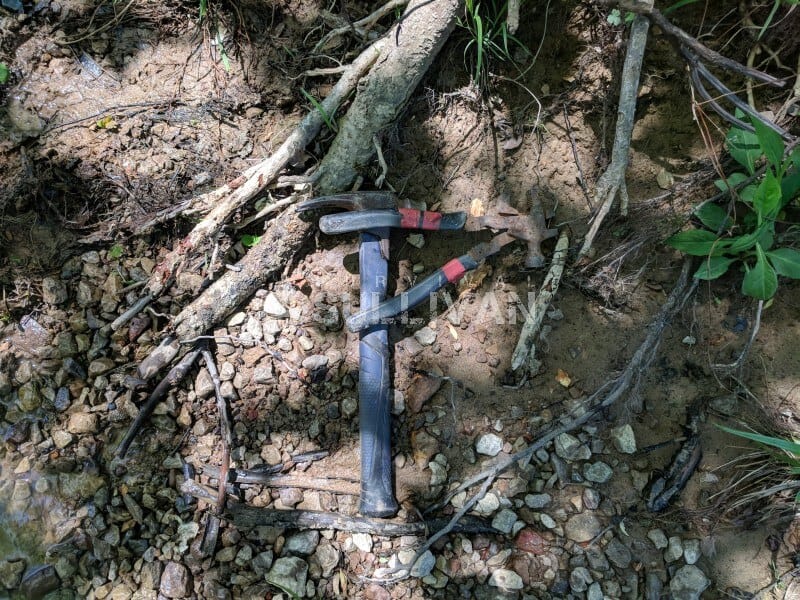
Line Fencing Equal Shares
In some states, property owners on either side of a boundary line fence are responsible for its upkeep. Even if you do not care if a fence surrounds your property, you may be legally and financially responsible for not only keeping it sound but removing brush and debris in its vicinity.
In fact, if you live in a state with strict line fencing laws you could be charged with trespassing if you do not permit the adjacent property owner to come 10 feet past the fence onto your land to do repairs or debris removal.
Insurance and Fencing
Placing a perimeter fence on your property, as well as the type of material it is constructed from could reduce or increase your insurance policy premium and/or deductible or invalidate the policy. Read the fine print on your policy carefully before buying fencing material and investing any time in its construction.
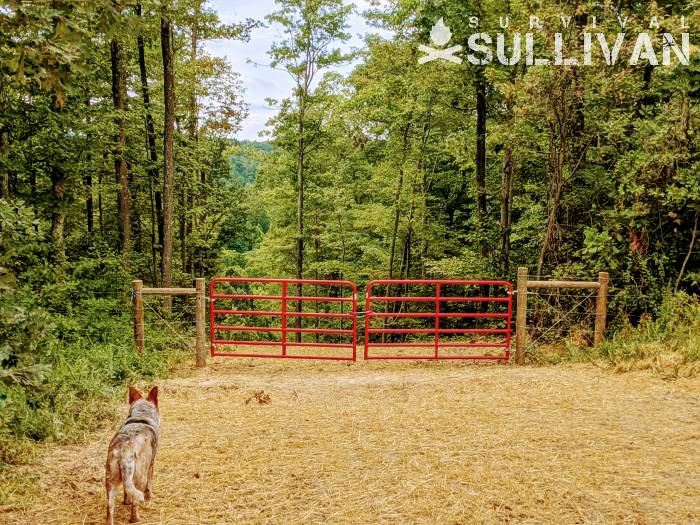
Gate Laws
Just like with fencing, copious amounts of regulations also pertain to gates. Not just the setting of gates, but the type of material that can be used, as well. In some states where it is illegal to fence across a waterway, you place a cattle guard in place of a gate to keep livestock in.
In states where it is allowed, (or during a SHTF scenario where state and local laws are no longer a concern), you could use trees as gate and fence posts instead of cutting or buying wood posts. Using the natural elements on your survival retreat will save you money and allow you to construct the fence quicker.
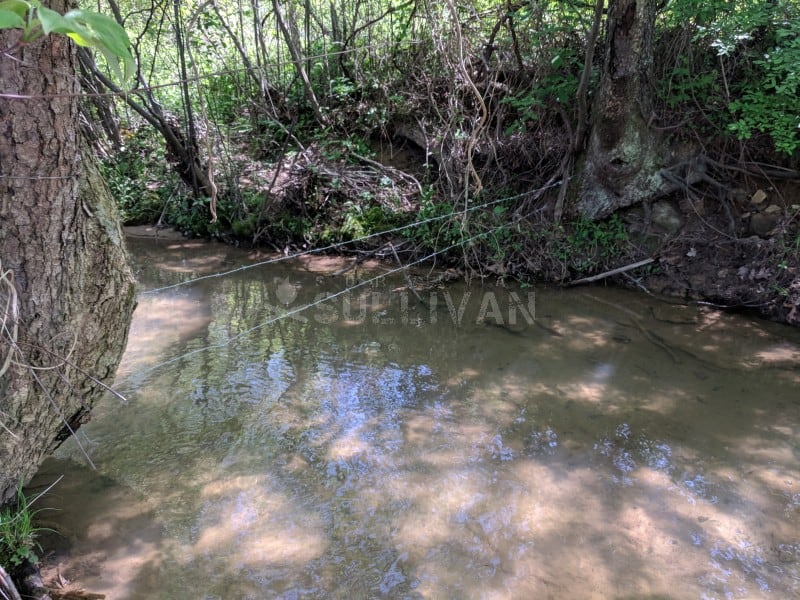
Fencing Over Waterways
A myriad of state and federal laws also exist related to placing fencing over waterways that run through your property. In some locations, it is illegal to fence over a public waterway to prevent its use for recreational boat passing.
In some states, you are allowed to establish some type of fencing across waterways on your property to allow livestock to water but not escape or to keep domestic pets from leaving the property.
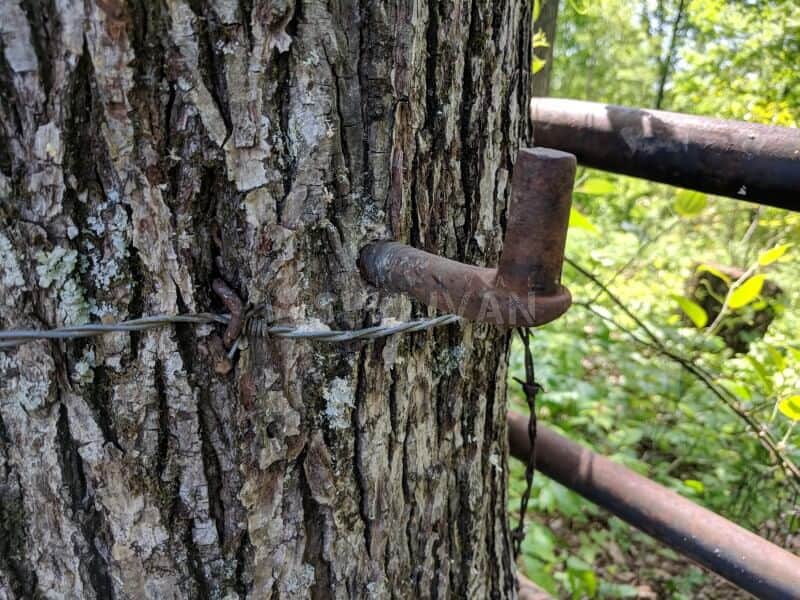
Stringing barbed wire and using trees, wood posts, or metal T-posts to create a perimeter or in-property fencing to secure livestock, and prevent trespassing in some states, but specific guidelines pertaining to the above water positioning of both the lowest and highest portions of the fence do exist.
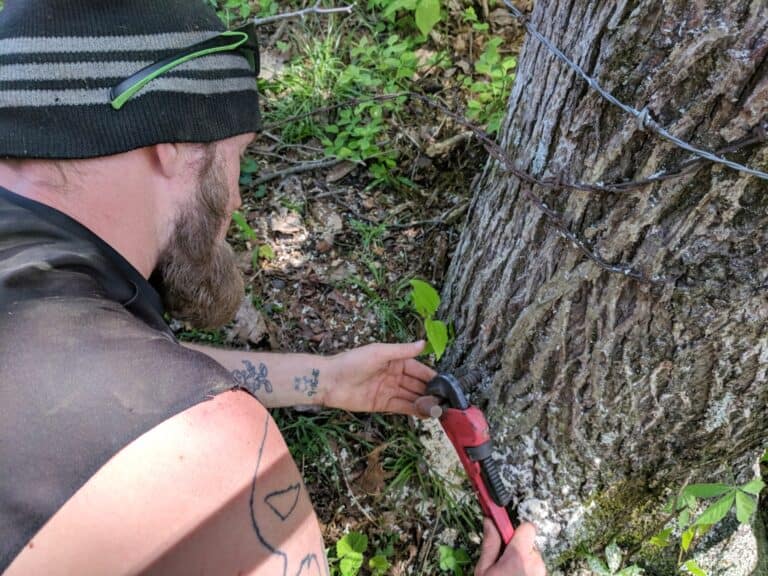
Floating fences, homemade or manufactured, are also legal in some states. However, even if you are fortunate enough to live in a state which allows you to fence across a waterway, that doesn’t mean you have the legal right to prevent the public from using the area of the creek, stream, pond, or river that is on your land.
Right-to-portage laws in some states permit a member of the public to use the waterway for recreational purposes by maneuvering under, over, or around fencing in the “least intrusive” way possible – without causing any damage on any private or personal property.
State laws pertaining to waterway fencing tend to be far more detailed than similar laws relating to boundary or on-property fencing requirements and liability.
Several state laws indicate a property owner can create a barrier, but also mandate that the structure not inhibit public recreational use of the waterway. In a situation like this, hanging a gate and not stringing fencing across the waterway, should not violate state law and still prevent livestock from escaping.
During an SHTF scenario, the gate could be permanently chained and locked to help deter trespassing – if you are no longer concerned with the long arm of the government issuing you a warning letter or a fine.
States with stringent waterway fencing laws also require an inspection of the barrier after it is built – some during the planning stages. If the government official does not approve the waterway fencing, appeals and court petitions are available to property owners to try and overturn the determination.
When setting up a fence across a waterway, it is best to do it when the water level is at its normal depth – especially if the barrier will also be used to keep livestock in. Drive a wood or metal T-post into the bank of the waterway as close to solid ground as feasibly possible to garner maximum durability.
Bank erosion will cause the post and the fencing to become loose or collapse entirely over time. A waterway fence will need to be monitored more closely and more often than your other perimeter fence sections.
If using barbed wire, the tangled fencing that will occur after it falls into the water and mud can entrap livestock, and cause potentially fatal harm or cause injury to a person using the waterway for recreation – and that would get you sued… or arrested.
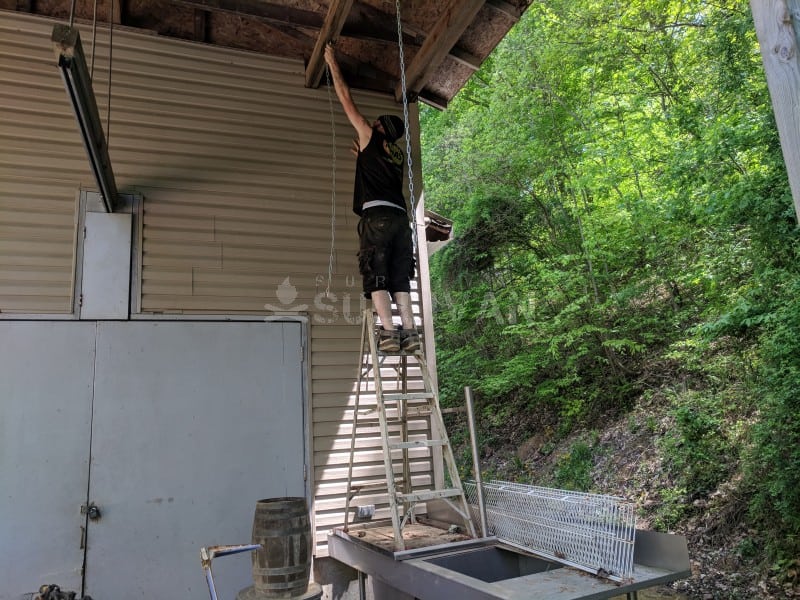
Fencing Stockpiles
Adam, one of our tribe members, somewhat eagerly followed my instructions and put a ladder on the summer kitchen stainless steel counter and sink combo to retrieve a stretch of chain and a clip for a project I tasked him with completing.
We had quite a stockpile of chain and clip ends around our survival homestead, but we have gone through it quicker than expected, while in the middle of a gate repair and addition project I did not have time to run to town and buy more chains.
So, the two dangling chains and clip ends that had held a porch swing for the former owners were sourced to complete the project and keep my livestock pasture rotation plan on track.
When figuring your prepping budget, make sure to include funds to stockpile these common fence building and repair supplies…
Disclosure: This post has links to 3rd party websites, so I may get a commission if you buy through those links. Survival Sullivan is a participant in the Amazon Services LLC Associates Program. As an Amazon Associate, I earn from qualifying purchases. See my full disclosure for more.
- Single and double-sided chain clips
- Sturdy chain
- Fence multi-purpose repair tool
- Barbed wire fence stretcher
- Fence staples
- Hammers
- Power drill and manual drill – and paddle bits
- Gate hardware
- Barbed wire
- 2-inch nails – if using board fencing
- Level
- Chalkline
- Measuring tape
- Post pounder
- Post hole digger
- T-posts and fence connector hardware
- Locust posts – for corner posts and securing heavy fencing
- Gates
- …and last but most definitely not least – leather work gloves.
Once you are aware of what state and local laws you are currently bound by, you can create a pre-SHTF fence that also adheres to your OPSEC philosophy. But your perimeter defense fencing project is not done yet.
Stockpile the type and amount of fencing you want to use to further secure your land, home, and waterway with a long-term disaster and desperate trespassers in mind. Draw up a diagram of your property or print a Google Earth to lay out potential points of entry and blind spots from your home and LP/OP locations.
Determine how much fencing and how many gates will be necessary to limit entry at the noted points. Cut the fencing to the necessary specifications and bundle it with all the hardware and supplies needed to complete that section of the project.
Label your bundles so they can be grabbed and constructed in the proper spot by a member of your family or tribe at a moment’s notice to lock down your survival retreat – and yes, even your suburban bug in location, as quickly and in the most sturdy manner, as possible.
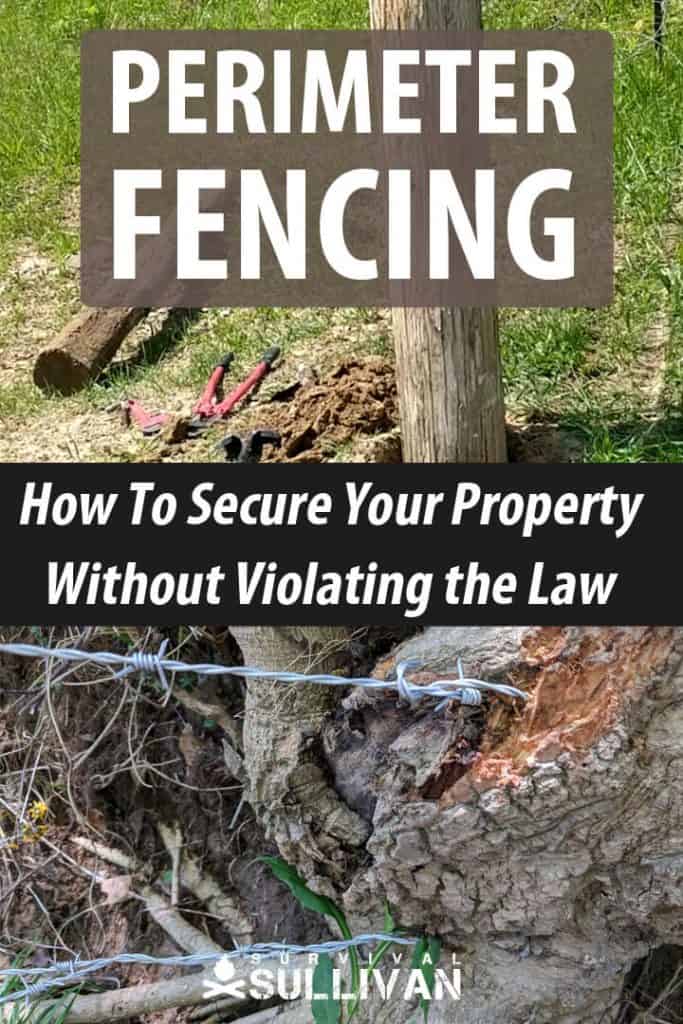

Tara Dodrill is a homesteading and survival journalist and author. She lives on a small ranch with her family in Appalachia. She has been both a host and frequent guest on preparedness radio shows. In addition to the publication of her first book, ‘Power Grid Down: How to Prepare, Survive, and Thrive after the Lights go Out’, Dodrill also travels to offer prepping tips and hands-on training and survival camps and expos.

Excellent article! Thank you.
Just my opinion.
Thank you Jerry, hope fellow survival homesteaders find it helpful.
Thank you Jerry, hope folks find it useful info.
One more thing to consider is utility right of way. If you have power lines, gas pipelines, or water lines running through your property, you need to check into those laws also. I unfortunately have both gas and power lines going through my property, so I have to allow ingress and egress at all entry/exit points. Also, fencing laws in these areas are not always the same as a regular perimeter or cross fence.
Very good point. We dealt with just that issue in our upper pasture where s pipeline runs across. Thankfully for us, it just meant putting in additional gates that I got the gas company to pay for.